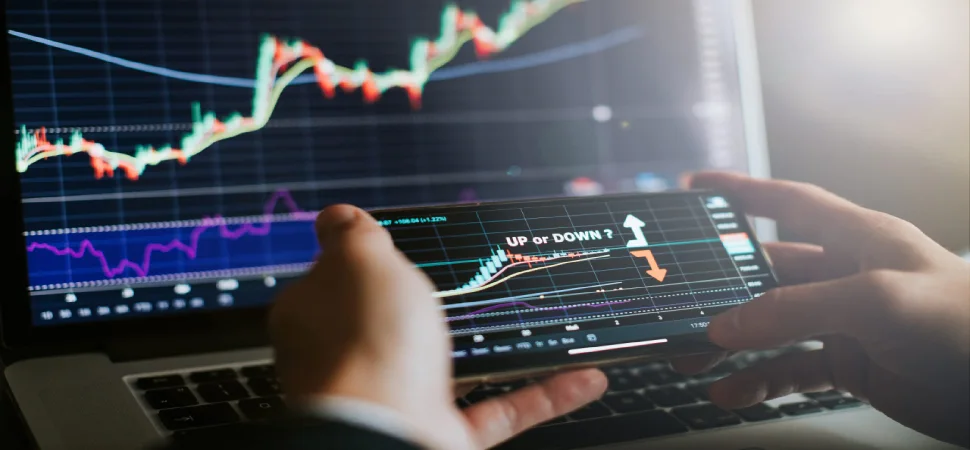24.09.2024
Евгений Лебедев
246

Fundamental analysis, chart analysis, and behavioral analysis - traders use many analysis methods to inform their buy and sell decisions. However, technical analysis holds a special place in the hearts of online traders. Here's everything you need to know about it to integrate it into your trading strategy.
Technical analysis is one of the most popular methods of analyzing the forex market, which is used for trading by a preponderance of traders. Technical analysis is based on the use of mathematical tools to process previous price values and make predictions based on them. Simply put, technical analysis is an attempt to “calculate the market”.
What is at the heart of technical analysis?
At the center of technical analysis is the use of various tools to examine the price chart. The goal of technical analysis is to identify trends based on this chart and, accordingly, develop the best strategy. In the Forex market, characteristic charts in the form of candlesticks are usually used, which can show the rise and fall of assets (in green and red respectively), open and close prices, as well as indicate highs and lows (so-called “wicks” at the top and bottom).
The theoretical underpinnings of technical analysis originate from the Dow Theory (Also known as the Dow Jones Theory). His theory is a series of rules that deals with the theory of market behavior. Despite the fact that the currency market has undergone serious changes over time due to the rapid development of technology and trade automation, the fundamental principles of the Dow Theory are still considered relevant among investors.
In general, technical analysis is based on several basic assumptions. The first principle is that charts carry all the necessary information to predict the growth or fall of prices. The second one is that price movements are subject to certain trends. According to the Dow Theory, we can distinguish 3 phases of any trend: the accumulation phase (the most astute investors start selling or buying), the participation phase (traders enter the market) and the realization phase (recognition of a new direction). Finally, Dow Theory states that historical trends tend to repeat themselves. Analysts believe that price trends will repeat themselves in the future. Therefore, they analyze previous price movements and use them to determine when to open and close positions to maximize their profits.

Technical analysis versus fundamental analysis
When talking about technical analysis, it is impossible not to mention its main alternative - fundamental analysis. There are many differences between these approaches, but the main difference is that fundamental analysis focuses on internal and external factors that can affect the price of an asset. A fundamental analyst uses economic indicators, company financial reports and technology sector indicators to determine the value of a particular asset. If the current price of the asset is below his valuation, he will buy. If it is above his valuation, he will sell.
Let's imagine that two investors want to invest in Tesla stock, with one taking a strictly technical approach and the other using fundamental analysis.
- The investor making decisions based on fundamental analysis will first look at the company's latest financial reports, the overall economic health of the sector, and industry news. The investor will then analyze the data and will be able to make a decision.
- On the other hand, a technical analysis advocate will completely dismiss the analysis of external factors and focus solely on Tesla's price chart. He or she will use technical indicators to look for trends that indicate the stock's past performance and use that data to determine where it will go next.
The debate between fundamental and technical analysis has been going on for years. The main argument of the defenders of technical analysis is that it is self-fulfilling. If all investors follow the same readings, then those readings are likely to dictate price movements. Although it has no basis in reality, a single prediction may be enough to cause a price movement. However, this explanation has two limitations. First, not all market operators use technical analysis, nor do they all use the same technical indicators with the same parameters. Second, even if there were enough traders using technical analysis to move the market, since speculative trading can be compared to a zero-sum game, it would be necessary to enter positions slightly earlier than other market participants in order to take advantage of this self-fulfilling effect. Each trader would try to anticipate the actions of the other, which would ultimately destroy the market anomaly.
Despite the advantages of each approach, it is recommended to choose both types of analysis and not to limit yourself to one exclusively in order to get the best results. It is foolish to start trading without being informed about the latest market and financial news. It is also problematic to make a decision on a trade without understanding the specific situation shown on the chart.

Problems of technical analysis
Although technical analysis is very popular, its methodology has some limitations. First, like fundamental analysis, technical analysis can be highly subjective. Even if indicators show the same indicator on a chart, investors may interpret it differently. Perhaps it is this subjectivity that is one of the most serious drawbacks of technical analysis. It is important to note that both investors can quite easily find justification for their conclusions, which adds to the subjectivity of the conclusions. In addition, one often hears the opinion that technical analysis gives late signals. By the time the analyst detects and confirms the trend, the changes will be behind.
The last drawback of technical analysis is the neglect of fundamentals. By not taking into account other factors that can determine prices, technical analysis offers a limited view of the market. While technical analysis provides useful entry and exit points, assuming everything goes according to plan, unexpected news or company announcements can lead to volatility. However, this disadvantage of techanalysis can be partially avoided by combining it with fundamental analysis tools. In conclusion, technical analysis is an important tool for any forex trader, offering clear and practical ways to analyze price movements.
However, relying solely on it may not be enough. Subjective interpretation of data, late signals and ignoring fundamentals are just some of the limitations of this method. Therefore, the best approach to trading is to combine technical analysis with fundamental analysis, allowing traders to gain a better understanding of market conditions and make informed decisions.

/ Reviews